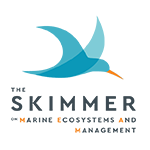


Perspective: The growing importance of regional oceans cooperation
By Alf Håkon Hoel Editor’s note: Alf Håkon Hoel is a professor at UiT – the Arctic University of Norway. He can be contacted at alf.hakon.hoel@uit.no. A valuable development in international oceans governance is the growing importance of...
All things to all people: What different groups mean when they talk about the Blue Economy
Editor’s note: The term on everyone’s lips (and documents) these days is Blue Economy. In this issue, The Skimmer takes a look at what various groups mean when they use this term, how it came about, what it looks like in practice or could look like in practice, and why it has some people worried. We’d love to hear your thoughts and experiences about the Blue Economy in the Comments section below.
So what in the world is the ‘Blue Economy’?
- It really depends on whom you ask. The term Blue Economy means a lot of different things to a lot of different groups. For example, the World Bank defines the Blue Economy as the “sustainable use of ocean resources for economic growth, improved livelihoods, and jobs while preserving the health of ocean ecosystem.” In contrast, a recent European Commission document defines it as “all economic activities related to oceans, seas and coasts.”
- A 2015 article by Silver et al. analyzed preparatory documents for and discussions of the Blue Economy at the 2012 UN conference on Sustainable Development (aka Rio+20) and described four general ways that groups were conceptualizing what the Blue Economy is. Voyer et al. 2018 reviewed newer documents and updated those initial conceptualizations of the Blue Economy to the following:
- Oceans as natural capital: This use of Blue Economy is used to express the importance and value of marine ecosystem services. It is used primarily by environmental organizations and is used to promote the societal and economic benefits (e.g., ecotourism opportunities, carbon markets, payments for ecosystem services) of environmental protection and restoration activities. Such activities include the creation of marine protected areas, decarbonization, and climate change mitigation. This conceptualization promotes protection of species and ecosystems as a driver of economic development rather than a competing priority and is the least common conceptualization of Blue Economy of the four.

If a country is not very dependent on the ocean, can it have a Blue Economy? A brief interview with Joanna Smith of Nature United
Editor’s note: Joanna Smith is director of ocean planning and mapping with Nature United, the Canadian affiliate of The Nature Conservancy. In this capacity, she is the Seychelles marine spatial planning (MSP) process and science lead. She splits her time between Canada, Seychelles, and other travels.
The Skimmer: How have you seen Blue Economy develop over recent years?
Smith: In 2012, the European Union introduced its “Blue Growth” platform. This platform was heavily focused on employment and creating jobs in new and emerging ocean sectors. It was a diversification of sorts to make up for shrinkage in other markets. Initially it did not have a sustainability focus per se, but in the following years, the word “sustainable” became more prominent.
To me, the “Blue Economy” was launched in 2014 by small island developing states (SIDS). It is a fundamentally different concept from Blue Growth in that it highlights the significance of the oceans for these nations in the context of ocean conservation, sustainable livelihoods, economic diversification, and maritime security. For many SIDS, a high percentage of their Gross Domestic Product (GDP) comes from marine sources – their economies truly are “blue”. For these nations, Blue Economy is not just about diversifying their ocean economies (the parts of their national economies dependent on the ocean). It is also about increasing the resilience of their ocean economies, increasing maritime safety and security (from piracy and IUU), improving ocean management and food security, protecting the environment, and adapting to climate change.

Latest News and Resources for Ocean Planners and Managers
- Marine social sciences network launched
- New IUU Fishing Index maps global exposure and response to IUU fishing (read the report)
- Guatemala conducts marine spatial planning exercises
- New report describes changes and variations in the ocean over past decades
- Ocean acidification dissolving seafloor calcite in hotspots around globe
- Climate change changing ocean colors
- UN estimates improved coral reef health could generate over US$70 billion
- US National Academy of Sciences releases report on interventions to increase the persistence and resilience of coral reefs
- Report describes national single-use plastic policies worldwide
- Successful models for reducing marine pollution (wastewater, agricultural runoff, and marine litter) reviewed
- Measures to reduce plastic pollution in Latin America and the Caribbean summarized
- Report recommends ways to strengthen European marine ecosystem modeling to better inform management
- Open access book provides first comprehensive overview of marine spatial planning
- IOC launches Ocean Data and Information System (ODIS) catalog of ocean-related data, information, products, and services
- New guide helps marine scientists tweet more effectively
And check out new training opportunities on The Skimmer’s Marine Planning and Management Training page!
